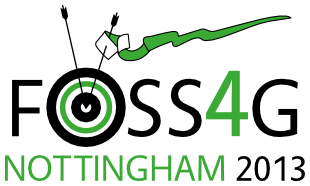Presentation
CartoDB 2.1
Sandro Santilli (CartoDB)
12:00 on Friday 20th September (in Session 31, starting at 11:30 a.m., EMCC: Room 1)
Show in Timetable
CartoDB is an open-source technology stack that offers mapping services for dynamic data, APIs for application development, and data management tools. CartoDB as a service wraps all those features into a secure, scalable, and powerful cloud based tool to drive geospatial applications on the web. CartoDB just passed the one-year mark since it's first public release and will soon close in on two years since the initial beta release. Over that time, CartoDB has grown and improved in many ways, we would like to share some of those advances and the lessons we have learned with you now. A primary area of development has been the speed and reliability of the dynamic tile service. Dynamic tiles, map tiles that change to reflect modifications in underlying data, are a key feature that sets CartoDB apart from other available services. To handle this feat, CartoDB uses a combination of database optimization, query optimization, and multi-tiered caching. For database optimization, CartoDB uses predictable schemas and automated geometry reprojection for web-based maps, queries are limited and tuned for tile-based visualizations, and caching happens from the database to the cloud to help deliver the fastest dynamic tiles available. CartoDB is also innovating on the web through the use of SQL everywhere. SQL everywhere means just what it says, SQL is used from the server, to CartoDB's administrative consoles, all the way to the client side JavaScript library. Exposing the full power of SQL, and geospatially enabled SQL through PostGIS, is helping to give our users access to the most powerful tool for building web-GIS tools and spatially enabled applications. These features and many more have made for an exciting pace of development since CartoDB's initial release. We will report here on a range of advances made in the software that are relevant to users and of interest to the open-source community.
